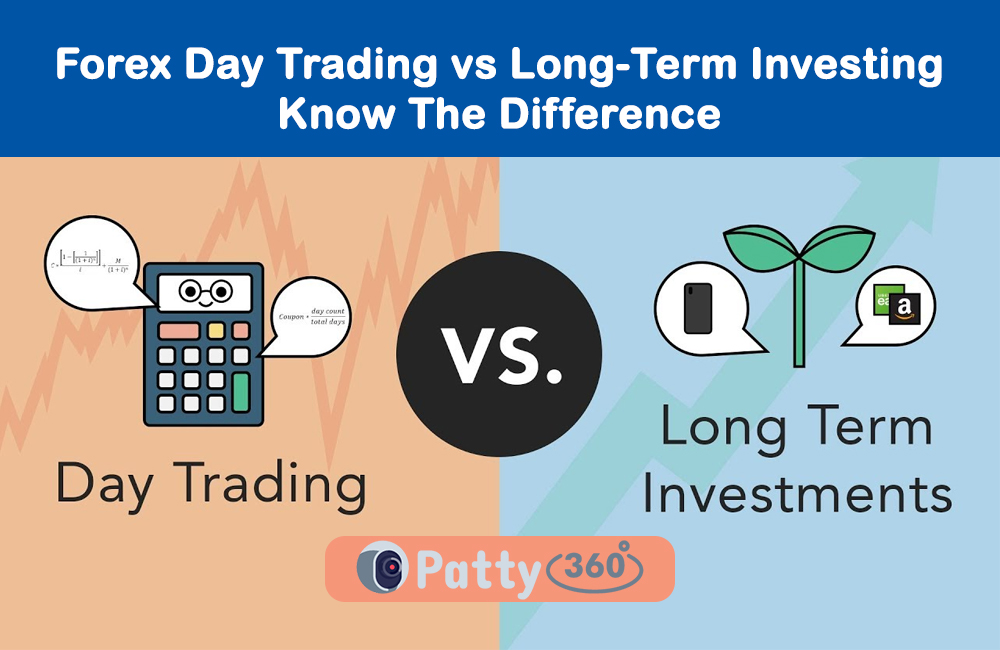Business
Forex Day Trading vs Long-Term Investing: Know The Difference

Although forex day trading and long-term investing have similar goals, the approach used is different for both. Both traders and investors want to earn profits in the stock market, but they are on the opposite side of the reward/risk spectrum.
For a beginner, it may be difficult for them to understand the difference between day trading and long-term investing. This is why we have prepared a guide to discuss the major difference between the two. Before entering the trading market, make sure you know the opening and closing times of the market.
What is day trading?
Day trading involves opening and closing trades on the same day. A day trader will open the trade in the morning and close it at the end of the day.
When you leave a trade open overnight, there’s a risk of market fluctuation. If there are unexpected changes in the market conditions, it might hurt your trade. By opting for day trading, traders can avoid overnight risks.
Day trading is characterized by fast-paced trading. For the best outcome, traders pay full attention to their trade during the day and close it before the day ends. Some traders close their trade as soon as it reaches the profit target while others may keep their trade open for the entire day.
There are three most important strategies used by day traders. These include:
- Trend-following
- Breakout
- Mean-reverting
Out of all the three, the breakout strategy is the most popular one. It is followed by most day traders. This type of strategy is based on algorithm trading. Riding intraday trading within a short time can give you better returns in the long run.
What is long-term investing?
Long-term investors use a different approach than day traders. Instead of focusing on short-term price fluctuations, they pay attention to long-term price movements and market growth.
Unlike day trading, long-term investing doesn’t need traders to actively manage their trades. Instead, it is more on the passive side.
Most long-term investors follow the “buy-and-hold” approach. They buy assets or stocks and wait for the price to rise in the long term. They don’t need to be bothered by short-term price changes even if it hurts their trade.
Let’s say, you have invested in a bear market. The interesting thing is you will still be able to generate a profit after a decade. This is the beauty of long-term investing. Now you know why so many traders in the stock market are interested in this type of trading.
Long-term investors can be both conservative and aggressive in their trading approach. A portfolio full of stocks is riskier than a portfolio with more bonds. Similarly, investing in value stocks is less risky than investing in growth stocks.
Advantages of Day Trading
The main advantages of day trading are:
- Higher profits
This is one of the main reasons that traders get into day trading in the first place. But at the same time, it also involves higher risks, so you need to be careful of that. You should be able to understand the market clues to avoid potential risks. You should also know how to limit risk in a single trade. If you are not good at day trading, you will end up losing money.
- More opportunities
This is another good thing about day trading. It provides plenty of trading opportunities. You just have to identify the right opportunity and act upon it.
Disadvantages of Day Trading
The downside of day trading includes the following:
- Significant losses
Day trading involves higher risks, so you need to be careful with the amount you invest. Trade the money that you can afford to lose. Don’t get tempted to invest more just because you had a few profitable rounds.
- Higher costs of trading
Day traders get involved in multiple trades in a day. This automatically increases their trading costs for them. This can eat up a good portion of their trading profits.
Advantages of Long-Term Investing
Here are the advantages of long-term investing:
- Less time consuming
Long-term investing is less time-consuming because of the buy-and-hold approach. You invest money for the long term and relax. Many traders invest with a holding period of 20-30 years or more.
- Markets go up in the long-term
The good thing about long-term investing is that the market tends to rise in the long term. This ensures positive returns at the end of the holding period.
Disadvantages of Long-Term Investing
The cons of long-term investing are:
- Lower profit
Long-term investing is safe and therefore the profit returns are much lower.
Final Words
Now that you know the difference between the two trading styles, you can decide which one is more suitable for you. If you want to play safe, then go for long-term investing. But if you want higher returns, then day trading is for you.






